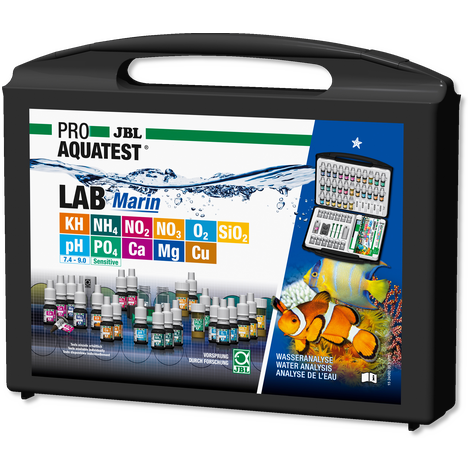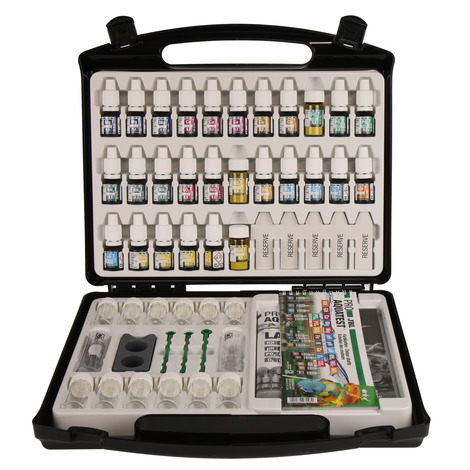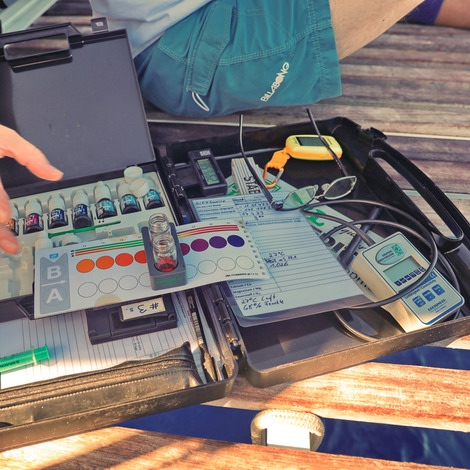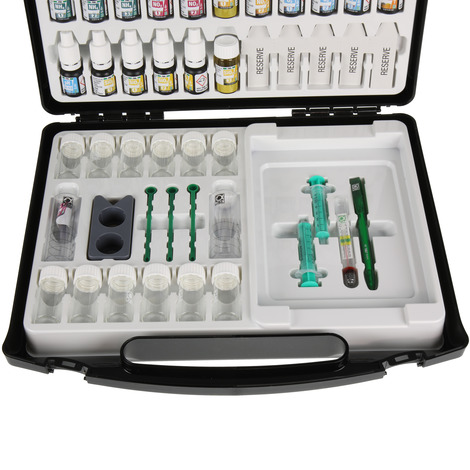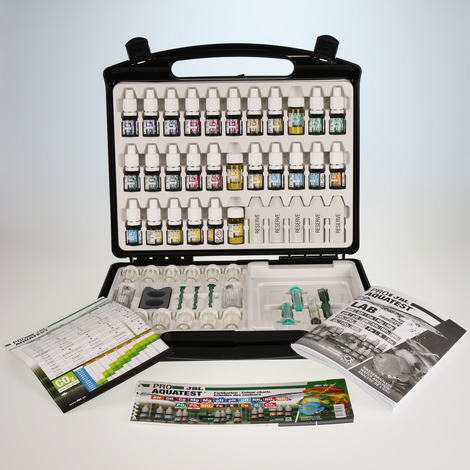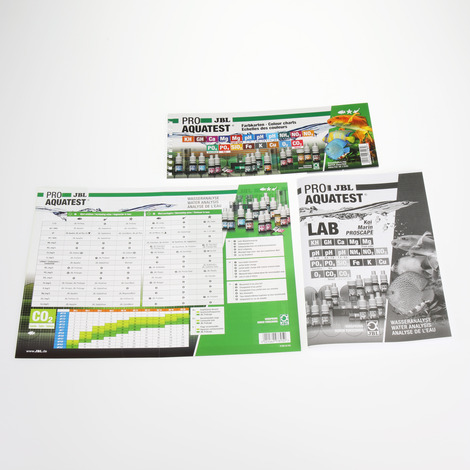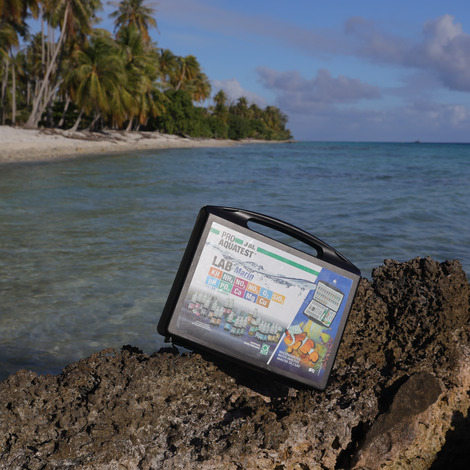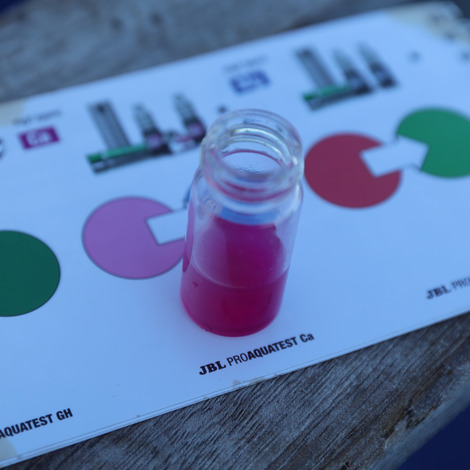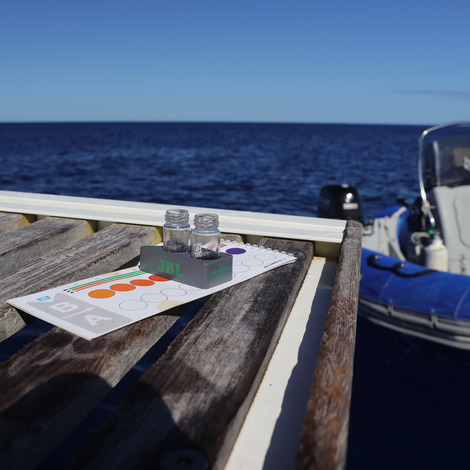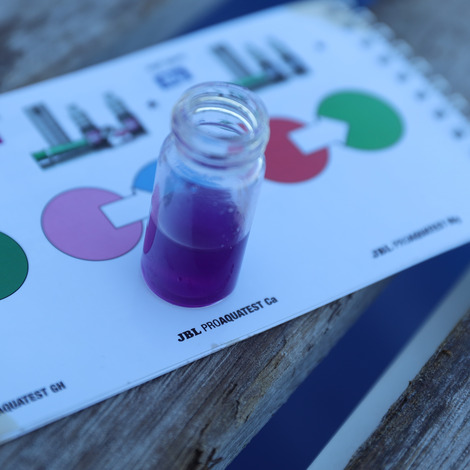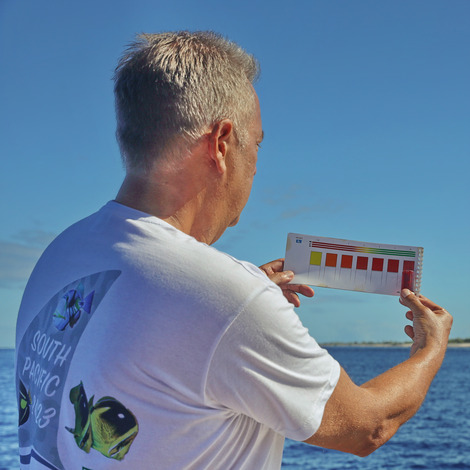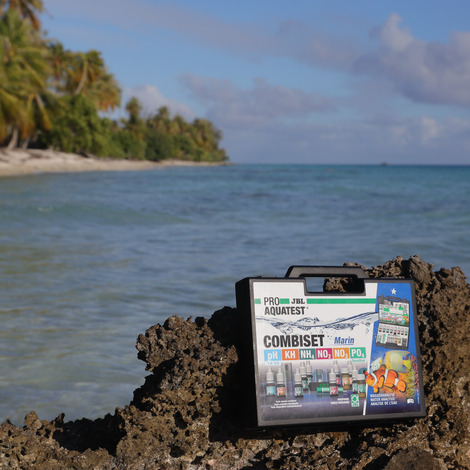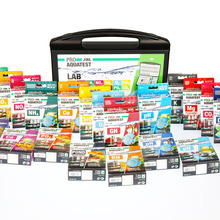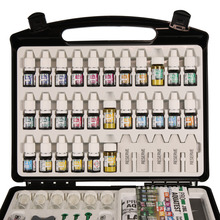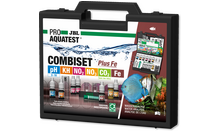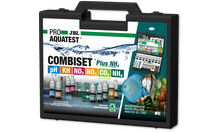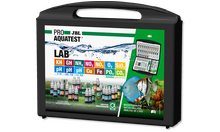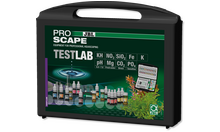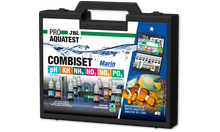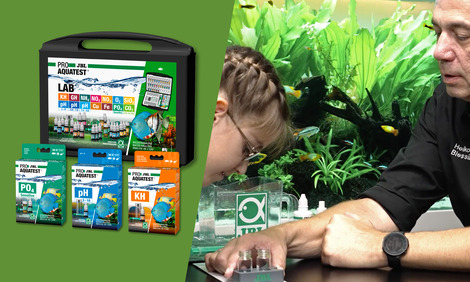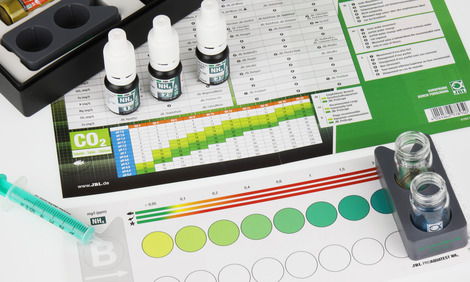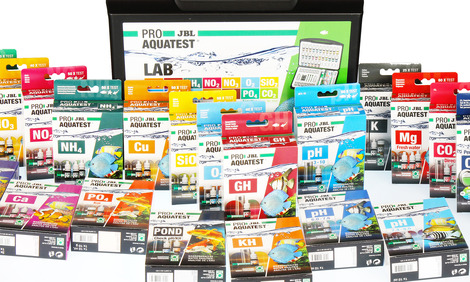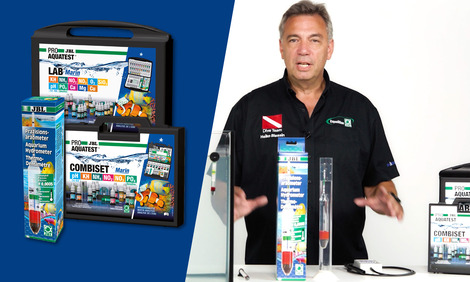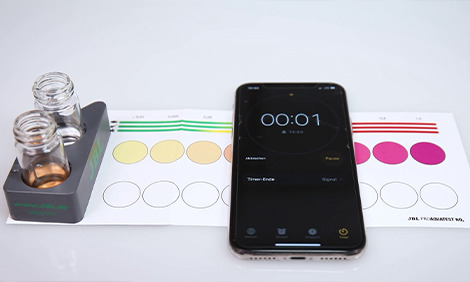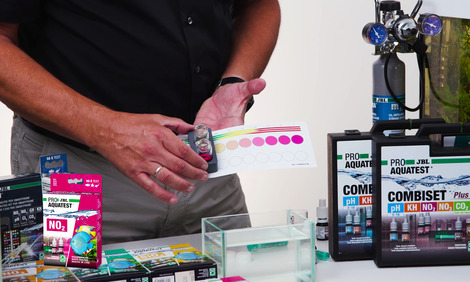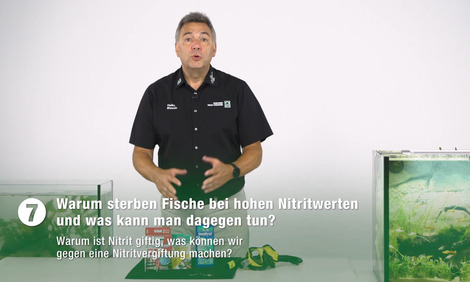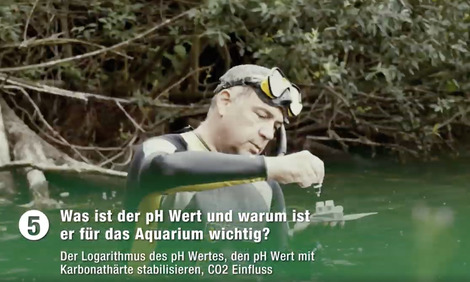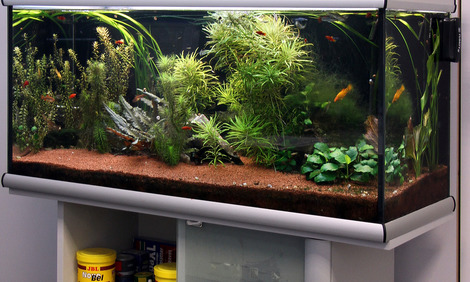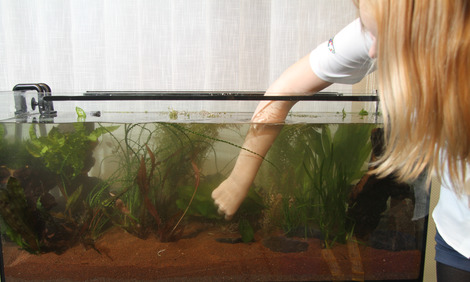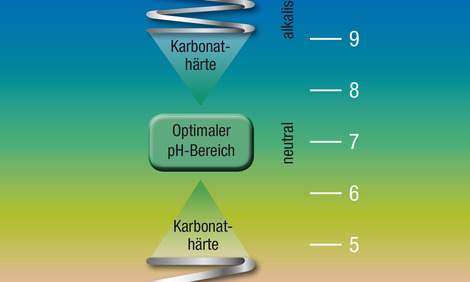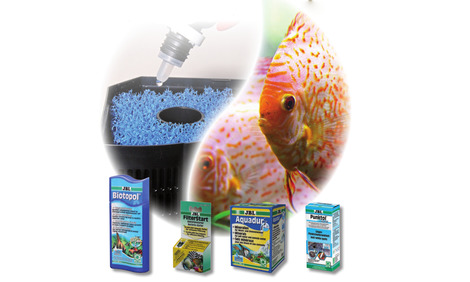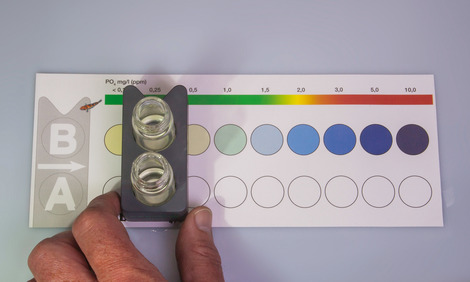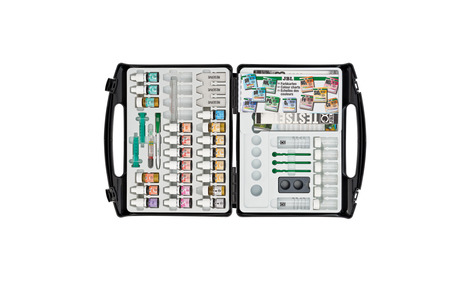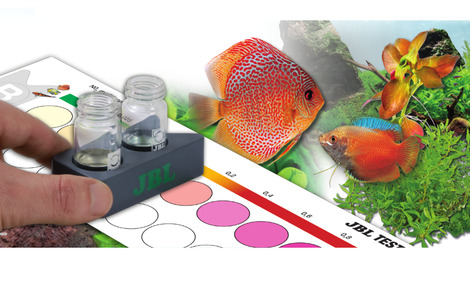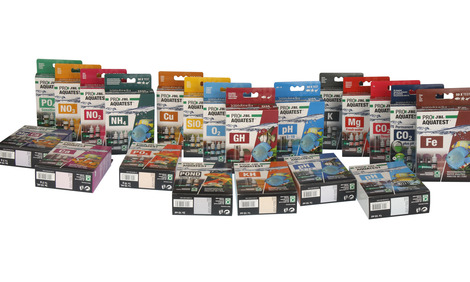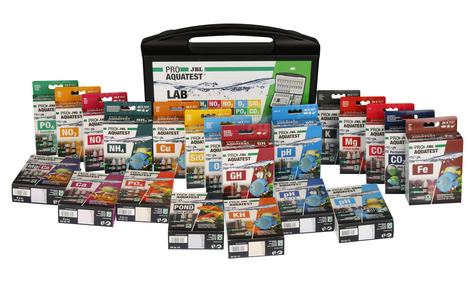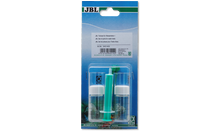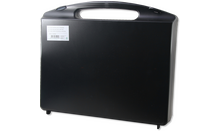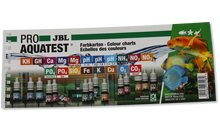Don’t guess - measure:
Get a regular update on whether all the important water values in your marine aquarium are OK or whether there is a need for action to correct values that are developing in the wrong direction. If problems arise (sick fish, invertebrates not growing, algae problems) water analyses are really the only way to get to the bottom of it! Once the tests have helped you find the underlying cause, you can start to correct it.
The following tests are included in the test case:
pH test: acidity of the water from 7.4 to 9.0
O2 test: determination of the oxygen content
KH test: pH stability of the water (carbonate hardness)
PO4 test: determination of the phosphate content (reason for algae growth and plant nutrient)
Test NH4 / NH3: indication of non-toxic ammonium, determination of the toxic ammonia using table
NO2 test: determination of nitrogen compound nitrite, which is toxic for the fish
NO3-Test: determination of the nitrate content (reason for algae growth)
Cu Test: heavy metal deadly for invertebrates. Also important for adjusting the therapeutic dose of medications
SiO2 test: determination of the silicates (silicic acid) as cause for diatoms
Ca test: determination of the calcium content in marine aquariums. Needs to be between 400 and 440 mg/l for healthy coral growth
Mg/Ca test: determination of magnesium and calcium content in marine water aquariums. The magnesium content needs to be between 1200 and 1600 mg/l. During the procedure, first the Mg content is tested and then the Ca content. Subsequently, the value of the Ca content is subtracted from the Mg content and this is then the actual Mg content of the water.
The following tests are available as supplements:
pH test: acidity of the water from 3.0 to 10
pH test: acidity of the water from 6.0 to 7.6
Almost all test reagents are available as environmentally friendly refill packs!
JBL PROAQUATEST LAB Marin
Professional test case for exact marine water analysis
- Monitors the water values in marine aquariums simply and reliably. Determines: pH value, carbonate hardness, calcium, magnesium, copper, ammonium, nitrite, nitrate, phosphate, silicate, oxygen
- Easy to use: add water to cuvette, add indicator, compare on scale / count drops until colour changes
- Comparator system takes the inherent water colouring into account. Incl. water analysis report sheets & pen
- Childproof reagent bottles, waterproof plastic case, refill reagents separately available
- Package contents: 1 test case, incl. 29 reagents, 12 glass vials, 2 plastic cuvettes, 2 syringes, 3 measuring spoons, thermometer, pen, report sheets and analysis sheet, laboratory comparator system & detailed instruction for use
